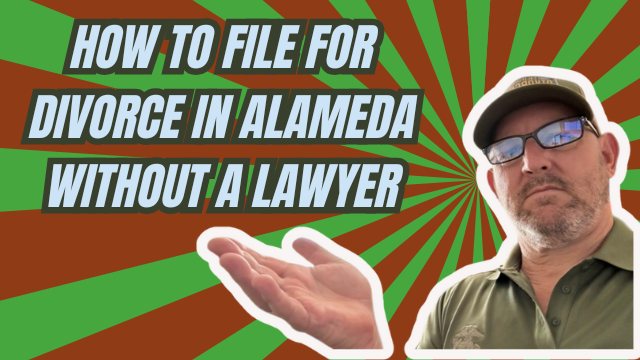How to File for Divorce in Alameda Without a Lawyer | Alameda Divorce Guide
I’m Tim Blankenship from Divorce661. If you want to file for divorce in Alameda County without hiring an attorney, you can — but only if you do it correctly. Alameda has strict e-filing and judgment formatting rules that trip up many self-filers. Below I walk through the essential steps, common pitfalls, and practical tips to get your case accepted the first time.
- File the petition and summons (include UCCJEA if you have children).
- Serve your spouse or obtain a signed Notice of Acknowledgement.
- Exchange required financial disclosures.
- Draft and submit a settlement/judgment that follows Alameda formatting rules and e-file everything.
Step 1 — Start the case: Petition, Summons, and UCCJEA
The first paperwork sets the tone. File your Petition for Dissolution and the Summons electronically through Alameda County’s e-filing system. If you have children under 18 or other custody-related issues, include the UCCJEA (Uniform Child Custody Jurisdiction and Enforcement Act) form to show jurisdiction information about where the children have lived. Missing or incorrect forms at this stage are a common cause of delays and rejections.
Step 2 — Proper service or signed acknowledgement
After filing, your spouse must be served with the filed documents or must sign a Notice of Acknowledgement of Receipt (aka proof of service by mail with acknowledgment). Proper service ensures the court can move forward. Mistakes here — such as improper service methods or missing proof — will halt your case.
Step 3 — Financial disclosures: be transparent and complete
Exchanging financial disclosures is required and essential for a fair settlement. Typical documents include:
- Preliminary Declaration of Disclosure (and the attached Schedule of Assets and Debts)
- Income and Expense Declaration
- Copies of recent paystubs, tax returns, and account statements
Failing to exchange these or providing incomplete information can prevent the judge from approving your agreement or judgment.
Step 4 — Draft the settlement and submit the judgment correctly
Most DIY filers think the hard part is done after the agreement is signed — but Alameda’s rules about judgment formatting and e-filing are strict. Judges and clerks expect certain formatting, captions, signature blocks, and supporting declarations. Even small formatting errors can trigger rejections and multiple resubmissions.
Common judgment/e-filing pitfalls
- Wrong case caption or judge information
- Incorrect margins, fonts, or spacing that don’t meet local rules
- Missing or incorrect signature blocks and dates
- Not attaching required exhibits or declarations
- Attempting to file via paper when e-filing is required
Real client example: Why getting help can save time
One client in Alameda tried to file on their own and was rejected multiple times due to formatting and e-filing issues. We cleaned up the paperwork, corrected the judgment formatting, e-filed the case properly, and had the divorce finalized — all without a single court appearance. That saved time, money, and frustration.
Practical tips to avoid rejection
- Follow Alameda County local rules: read the court’s filing guidelines before you prepare documents.
- Use court-approved forms: where available, use Judicial Council forms and local templates.
- Check formatting carefully: case caption, judge line, margins, page numbers, and signature blocks.
- Create a checklist: petition, summons, UCCJEA (if applicable), proof of service, financial disclosures, settlement, proposed judgment.
- Confirm e-filing requirements: make sure your documents are submitted through the court’s approved e-filing vendor and in the correct PDF format.
- When in doubt, ask for help: a flat-fee service that knows Alameda’s rules can prevent repeated rejections.
When to consider professional help
Self-filing can be cost-effective, but the risk is multiple rejections, delays, and confusion over court requirements. If you want to avoid those pitfalls, consider a specialist who handles Alameda County e-filing and judgment formatting. At Divorce661 we offer flat-fee, 100% remote services to prepare and e-file correct paperwork so your case moves smoothly.
Next steps and contact
If you want to file for divorce in Alameda without a lawyer but need help ensuring everything is correct, visit Divorce661.com to schedule a free consultation. We’ll walk you through the process, check your paperwork against Alameda’s rules, and help get your case finalized as efficiently as possible.
Resources
- Divorce661: https://www.divorce661.com

